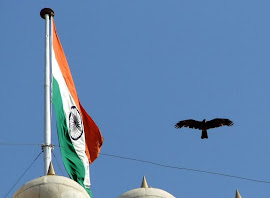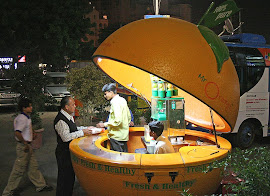Economic Crisis: Growing gap
Falling rupee and rising trade deficit are locked in a sequence of cause and effect. The currency depreciation has created a record deficit, which, in turn, is pushing the rupee value down further. By the end of August 2008, India’s merchandise trade deficit had hit an all-time high and was projected to swell to more than 10 per cent of GDP by the end of 2008-09. India’s import bill exceeded its export earnings by $14 billion (Rs 67,200 crore) in August 2008, taking the deficit for the April-August period to $49 billion (Rs 2,35,200 crore). The figure for 2007-08 was $80 billion (Rs 3,84,000 crore). With few signs of encouragement from the global economic environment, the prospects of any improvement in the external balance appear dim at the moment. India’s trade deficit continues to bear the brunt of expensive oil imports, which, according to Commerce Ministry data, stands at $46 billion (Rs 2,20,800 crore), despite the recent easing of global crude prices. The loss in the purchasing power of the rupee, which has depreciated 17.3 per cent against the dollar since the beginning of the financial year, is keeping the oil import bill high. On the other hand, the rupee’s sharp weakness—which, theoretically, makes exports more competitive—is yet to buoy exports in a significant way. The slowdown in global demand seems to be taking a toll on exports, which rose only 27 per cent in August, against the year-to-date growth of 35 per cent.Adding to the import bill and, thus, to the ballooning trade deficit is the strong growth in non-oil imports of fertilisers, chemicals, coal, non-electronic goods, agro-products, engineering goods and auto components. On the whole, imports grew 51 per cent in August.The Prime Minister’s Economic Advisory Council (EAC), too, has projected a trade deficit of $134 billion (Rs 6,43,200 crore) or 10.4 per cent of the GDP. The ballooning of the trade gap is, in turn, feeding into the current account deficit, which, the EAC expects, will nudge the 4.5 per cent-of-GDP mark for the April-September 2008 period. In its review of the economy in July, the Council had attributed the steep rise to the high oil import bill.The EAC’s outlook had forecast the aggregate net software and business service exports and remittances to expand in 2008-09 by 28 per cent, slightly less than the 31.5 per cent growth last year. However, the outlook for the global economy has taken a beating since. “The merchandise trade deficit in itself is not a cause for concern,” says Rajiv Kumar, Director and Chief Executive, ICRIER. “But with the invisibles (earnings by way of software and business service exports, remittances from overseas Indians and proceeds from inbound tourists) and capital inflows waning due to the global slowdown, the overall current account deficit will be large.”The high current account deficit, Kumar fears, may result in a large external account imbalance for India. While there is little chance of an upswing at present, other than to hope for bigger slumps in global commodity prices, the sure shot downside of the weakening external account will be a further slide in the value of the rupee. This will push up costs for import-led sectors and squeeze profit margins. Export-led companies replying on imported inputs and raw materials, too, may find their competitiveness impaired. The research and brokerage outfit, CLSA, for instance, has already raised its December target for the exchange rate to Rs 50 per dollar. Says Kumar: “If the central bank chooses to defend the rupee, there could be considerable drawdown of the reserves and an ensuing loss of confidence.” So, what it wins on the swings, it will lose in the roundabouts. There seems to be no easy way out of this conundrum

.jpg)








.jpg)

0 comments:
Post a Comment